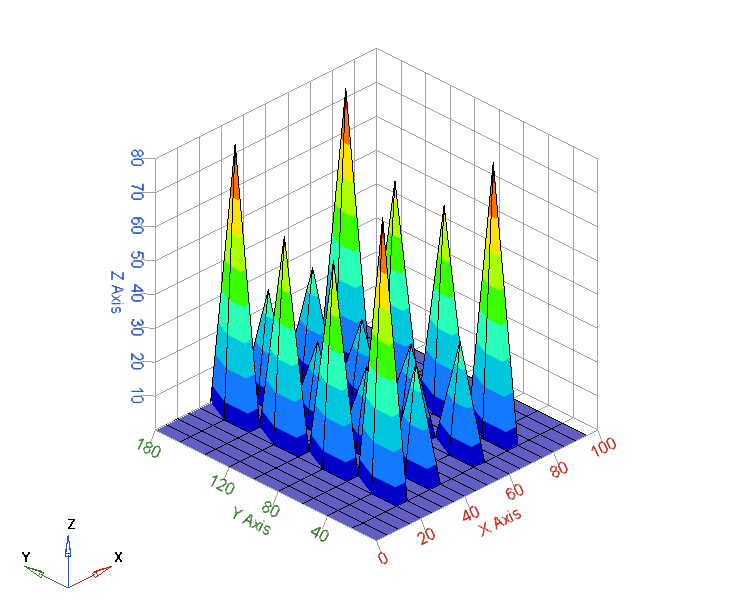fft2
Two Dimensional Fast Fourier Transform.
Syntax
f = fft2(x)
f = fft2(x,m,n)
Inputs
- x
- The signal to be transformed into the frequency domain.
- m
- The number of columns in the fft.
- n
- The number of rows in the fft.
Outputs
- f
- The frequency domain representation of x.
Example
Magnitude plot of fft2 for a signal with two frequency components in each direction.
f1x = 25; % first x frequency component
f2x = 40; % second x frequency component
fsx = 100; % sampling frequency in x
tsx = 1/fsx; % sampling time interval in x
n = 20; % number of x samples
tx = [0:1:(n-1)]*tsx; % x time vector
signalx = 20*sin(2*pi*f1x*tx) + 8*sin(2*pi*f2x*tx);
fqx = freq(n,fsx); % x frequency vector
f1y = 60; % first y frequency component
f2y = 80; % second y frequency component
fsy = 200; % sampling frequency in y
tsy = 1/fsx; % sampling time interval in y
m = 10; % number of y samples
ty = [0:1:(m-1)]*tsy; % y time vector
signaly = 12*sin(2*pi*f1y*ty) + 16*sin(2*pi*f2y*ty);
%pad = 4;
%m = pad * m;
fqy = freq(m,fsy); % y frequency vector
signal = signaly' * signalx;
ft = fft2(signal,m,n) / (m*n); % normalized fft2
contour3(fqx, fqy, abs(ft));
Figure 1. fft2
Comments
The dimensions of the fft2(m, n), default to the dimensions of the matrix being transformed. If m, n are not the defaults, the signal matrix is either truncated or extended with zeros to the specified length. fft2 uses the fftW library.